Kyung Bok Kung Korean BBQ Restaurant
7801 Beach Blvd, Buena Park, CA 90620
714.888.4948
www.kyungbokkungusa.com
Wed 12/05/2018, 07:50p-10:10p
![KyungBokKung Exterior]()
Although K-town remains the de facto epicenter of Korean dining in Southern California, the city of Buena Park is definitely making inroads, as evinced by the debut of KyungBokKung. Launched in mid-August, it is, as far as I know, the fanciest Korean restaurant to open in recent times. Named after Gyeongbokgung, a key royal palace built during the Joseon era, KyungBokKung offers diners high-end Korean BBQ, and more interestingly, hanjeongsik, a style of multi-course dining you don't see very often around these parts. The restaurant occupies a 6,800ft2 building that was previously home to KBBQ-slash-sushi joint Sagan (2005-2014) and Spoons California Grill & Bar (1985-2004), and which was originally constructed as a Red Lobster back in 1975. Thus, it is not a new construction, as some people seem to believe. Total dining area is around 3,400ft2, and over 180 guests can be accommodated.
The restaurant is part of Entas America, an entity that also operates Sapporo Sushi & Grill up the street (opened March 2015). That entity, meanwhile, is owned by Entas Group, a Korean-based company that was established in 1991 with the first KyungBokKung. Entas currently operates 19 brands with over 100 locations in Korea (and one in Shanghai), and they've even expanded into complementary businesses such as meat processing, distribution, and duty free shops.
![KyungBokKung Menu: Beef Combination]()
![KyungBokKung Menu: Pork Combination]()
![KyungBokKung Menu: Beef Selection]()
![KyungBokKung Menu: Pork Selection]()
![KyungBokKung Menu: A La Carte]()
![KyungBokKung Menu: Side Meal]()
![KyungBokKung Menu: Signature Grill Course]()
![KyungBokKung Menu: Choice of Grill]()
![KyungBokKung Menu: Korean Traditional Course]()
![KyungBokKung Menu: Lunch Special]()
![KyungBokKung Menu: Ban-Sang]()
![KyungBokKung Menu: Take-Out Box]()
The menu reads (and is priced) fairly similarly to that of other high-end gogi-gui places, but with the addition of the aforementioned han-jeongsik selections. That's what we were here for, and we ended up going with the "Premium" option at $75 a head. Click for larger versions.
![KyungBokKung Wine List: White]()
![KyungBokKung Wine List: Red]()
![KyungBokKung Korean Liquor & Beer List]()
![KyungBokKung Spirits List]()
![KyungBokKung Sake & Soft Drink List / Dessert Menu]()
To drink, you get a small wine list, Korean liquors and beers, sake, and a handful of spirits. Corkage is a reasonable $20 per bottle, or $50 if you're thinking hard liquor. Click for larger versions.
![2002 Lanson Champagne Brut Noble Cuvée de Lanson]()
We had couple bottles, and first was the 2002 Lanson Champagne Brut Noble Cuvée de Lanson. The wine smelled of rich apple intermixed with lemon and light brioche. On the palate I got pronounced toast, joined by more of that robust fruit, minerals, and a touch of oxidation. I think this one still has more to show off as it matures.
![Porridge / Juk]()
![Water Kimchi / Dongchimi]()
1: Porridge & Water Kimchi / Juggwa Dongchimi
We commenced with a small serving of jeonbok-juk, a homey abalone rice porridge that had a bit more depth than usual, along with a welcomed peppery kick on the back end. Along with it came a refreshing bowl of dongchimi with its super crunchy chunks of mu radish.
![Broiled Sliced Beef with Vegetables / Roseupyeonchae]()
2: Broiled Sliced Beef with Vegetables / Roseupyeonchae
Here we see the restaurant's version of roseupyeonchae (a dish of veggies wrapped in beef). Think sweet and tangy and crunchy, but all moderated by the relative heft of the meat.
![Seafood Salad / Haemul Saelleodeu]()
![Tomato Seafood Salad / Tongtomato Haemul Saelleodeu]()
3: Tomato Seafood Salad / Tongtomato Haemul Saelleodeu
Next were two salads. The first featured seafood in an acidic-yet-savory broth, topped with a bevy of light, bright veggies. The second was more interesting thanks to its crab-stuffed tomato, which actually did a pretty good job marrying the sweetness of the crustacean with the tartness of the berry. Overall, these two plates functioned as a foil to some of the heavier flavors on the table.
![Korean Beef Tartare / Yukhoe]()
4: Korean Beef Tartare / Yukhoe
The yukhoe was on point. It had a great balance of savoriness and sweetness--especially with the juicy crunch of the bae--and I was a fan of the creeping gochujang spice on the back end.
![Premium Assorted Sashimi / Teugseon Modeumhoe]()
5: Premium Assorted Sashimi / Teugseon Modeumhoe
Our sashimi course was certainly fancily-presented, and was composed of five selections. Clockwise from top-left we had:![Gujeolpan]()
![Gujeolpan (Wrapped)]()
6: Gujeolpan
KyungBokKung's gujeolpan arrived on a surprisingly weighty metal gujeolpan. Clockwise from left, items included (I think): dried anchovies (myeolchi-bokkeum), carrots (danggeun namul), soybean sprouts (kongnamul), cucumbers (oi), beef (bulgogi), shrimp (saeu), egg strips (al-gomyeong), and scallion (pa). The key was to wrap everything up with the included pancake, which made for an array of textures and tastes that melded well.
![Yukjeon]()
7: Yukjeon
The yukjeon were satisfying in a straightforward manner, and displayed a pronounced beefiness that paired well with that tangy dip on the side.
![White Kimchi / Bae Baeggimchi]()
8: White Kimchi / Bae Baeggimchi
A rolled presentation of baek-kimchi ate crunchy and clean, with a not unwelcomed undercurrent of sweetness.
![Braised Beef Short Ribs with Abalone / Jeonbog Galbijjim]()
9: Braised Beef Short Ribs with Abalone / Jeonbog Galbijjim
Our main course was the galbi-jjim, which definitely hit the mark. The ribs arrived as tender as I wanted, but still substantial, while taste-wise I found 'em super beefy, with a great balance of savory and sweet flavors. The use of jeonbok, meanwhile, made for some textural contrast and an additional point of interest in the dish. I didn't need the danhobak in there, but didn't mind it either.
![2002 Mailly Champagne Grand Cru Exception Blanche]()
The evening's second bottle was the 2002 Mailly Champagne Grand Cru Exception Blanche, a blanc de blancs expression. The nose conveyed fresh bread alongside rich pome fruit and a slight astringency. Taste-wise, the wine showed off more of the same in a surprisingly soft, smooth package that could perhaps use a bit more vibrancy to it.
![Grilled Fresh Water Eel / Minmuljangeo Gui]()
10: Grilled Fresh Water Eel / Minmuljangeo Gui
Grilled eel was dressed in a thick, sweet-savory sauce that made for a natural accompaniment for the fish. My favorite thing here were actually the stalks of asparagus underneath, which imparted an offsetting crunch and bitterness.
![Grilled Scallops (Fried Fish) / Gwanjagui Yoli]()
11: Grilled Scallops (Fried Fish) / Gwanjagui Yoli
The menu advertised "grilled scallops," but this obviously wasn't that (as the menu ostensibly changes seasonally). That being said, the fish worked it out, coming out properly crunchy, its mild taste supplemented by the sweet 'n' spicy nature of that sauce. I appreciated the contrast provided by all that greenery up top, too.
![Boiled Clam Soup / Baeghab Nabetang]()
12: Boiled Clam Soup / Baeghab Nabetang
I'm not sure if the soup had the advertised clam, but I quite enjoyed it nevertheless. The crab imparted a cozy brine, and I was quite fond of the soup's growing heat as well.
![Kimchi]()
![Side Dish Vegetables / Gyeotdeulim Yachae]()
13: Side Dish Vegetables / Gyeotdeulim Yachae
Next we were served what our server described as "nurungji-fermented kimchi boiled in stock." I don't think I'd ever had anything quite like this before, as it tasted extra funky, with a nutty, almost "muddy" quality to it. Along with the kimchi came a romaine lettuce salad, which was simple enough, and had some pleasant spicy and sesame notes.
![Mu Jangajji]()
![Muchae]()
![Heukmi Bap]()
![Baechu Kimchi]()
![Ban-sang / Gaeinsigsa Bansang]()
14: Ban-sang / Gaeinsigsa Bansang
Bansang basically refers to a main dish accompanied by rice and banchan, and tonight we were served doenjang-jjigae to close out our meal. The soybean paste stew hit the spot, and had seemingly more potency than usual.
![Dessert / Husig]()
15: Dessert / Husig
Dessert comprised a glass of sujeonggwa, a sweet-n-spicy cinnamon punch. Note the pine nuts tossed in there.
I was generally satisfied with the evening's dinner. It's pretty rare to encounter han jeongsik-style food at restaurants these days, so I'm glad that KyungBokKung is attempting it. We enjoyed a wide variety of dishes, some of which are not often seen, and the meal seemed like a good value too--we couldn't even finish all the food and ended up taking some home. Overall, given the level of the meal tonight, I'm actually curious about going back and trying the barbeque here.
7801 Beach Blvd, Buena Park, CA 90620
714.888.4948
www.kyungbokkungusa.com
Wed 12/05/2018, 07:50p-10:10p

Although K-town remains the de facto epicenter of Korean dining in Southern California, the city of Buena Park is definitely making inroads, as evinced by the debut of KyungBokKung. Launched in mid-August, it is, as far as I know, the fanciest Korean restaurant to open in recent times. Named after Gyeongbokgung, a key royal palace built during the Joseon era, KyungBokKung offers diners high-end Korean BBQ, and more interestingly, hanjeongsik, a style of multi-course dining you don't see very often around these parts. The restaurant occupies a 6,800ft2 building that was previously home to KBBQ-slash-sushi joint Sagan (2005-2014) and Spoons California Grill & Bar (1985-2004), and which was originally constructed as a Red Lobster back in 1975. Thus, it is not a new construction, as some people seem to believe. Total dining area is around 3,400ft2, and over 180 guests can be accommodated.
The restaurant is part of Entas America, an entity that also operates Sapporo Sushi & Grill up the street (opened March 2015). That entity, meanwhile, is owned by Entas Group, a Korean-based company that was established in 1991 with the first KyungBokKung. Entas currently operates 19 brands with over 100 locations in Korea (and one in Shanghai), and they've even expanded into complementary businesses such as meat processing, distribution, and duty free shops.

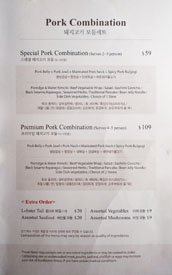
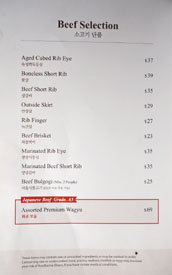
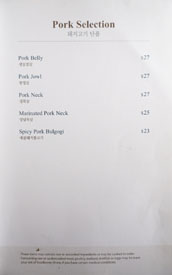
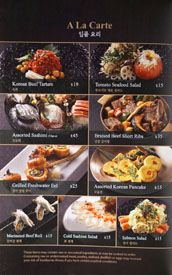
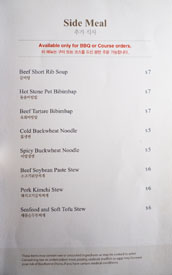
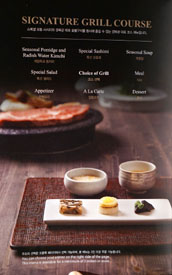
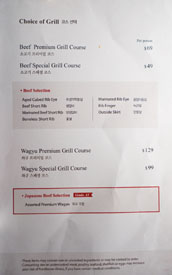
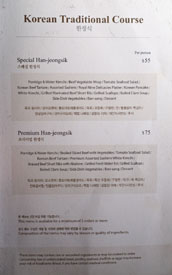
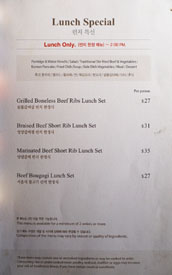
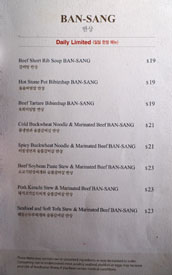
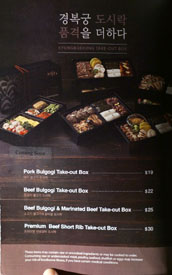
The menu reads (and is priced) fairly similarly to that of other high-end gogi-gui places, but with the addition of the aforementioned han-jeongsik selections. That's what we were here for, and we ended up going with the "Premium" option at $75 a head. Click for larger versions.
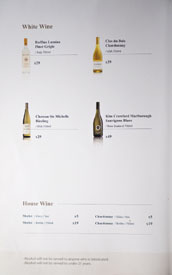
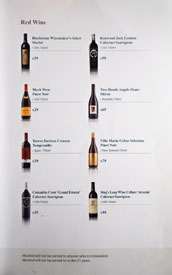
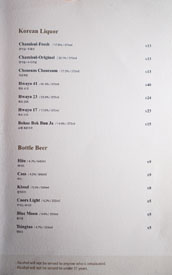
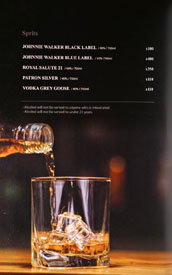
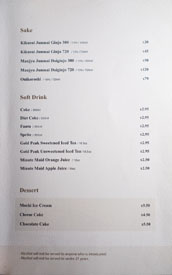
To drink, you get a small wine list, Korean liquors and beers, sake, and a handful of spirits. Corkage is a reasonable $20 per bottle, or $50 if you're thinking hard liquor. Click for larger versions.
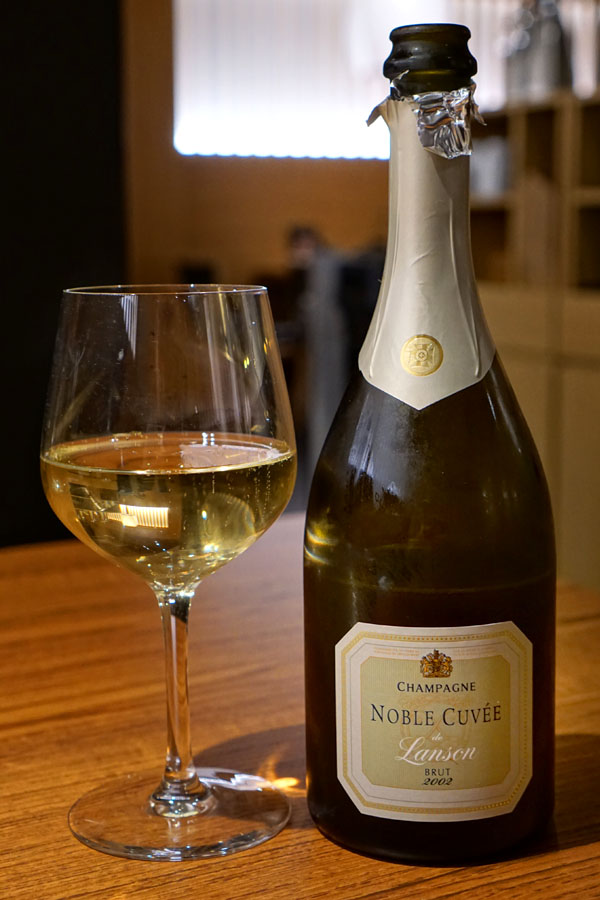
We had couple bottles, and first was the 2002 Lanson Champagne Brut Noble Cuvée de Lanson. The wine smelled of rich apple intermixed with lemon and light brioche. On the palate I got pronounced toast, joined by more of that robust fruit, minerals, and a touch of oxidation. I think this one still has more to show off as it matures.
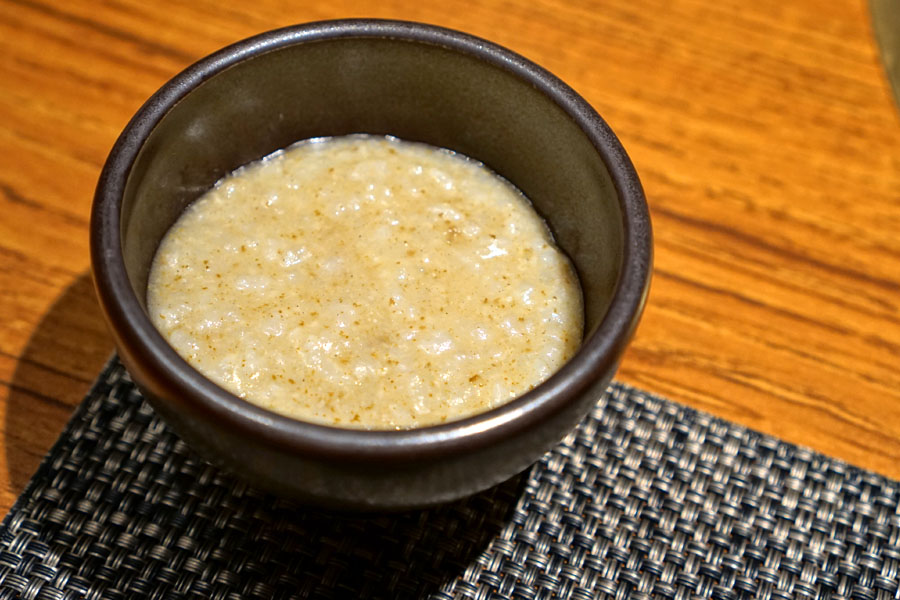
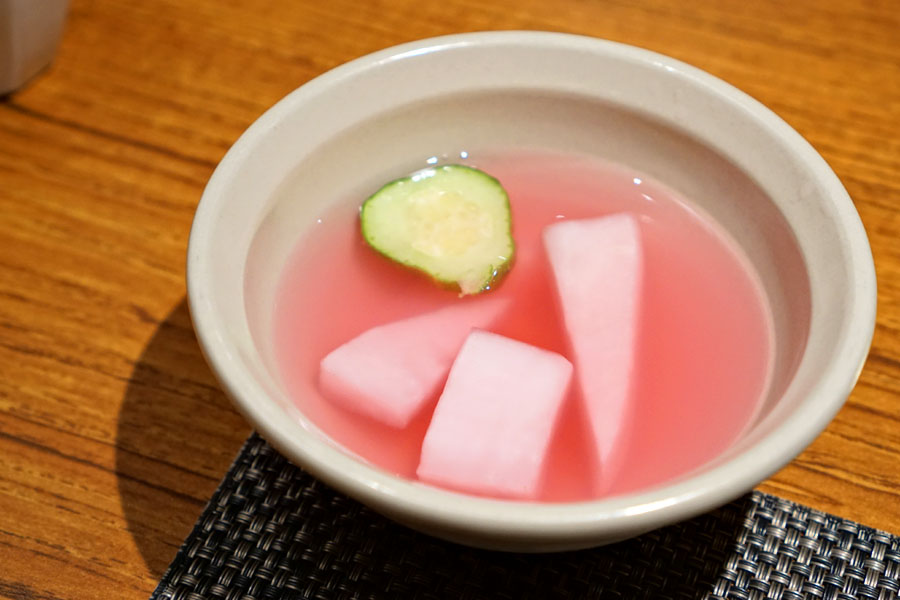
1: Porridge & Water Kimchi / Juggwa Dongchimi
We commenced with a small serving of jeonbok-juk, a homey abalone rice porridge that had a bit more depth than usual, along with a welcomed peppery kick on the back end. Along with it came a refreshing bowl of dongchimi with its super crunchy chunks of mu radish.
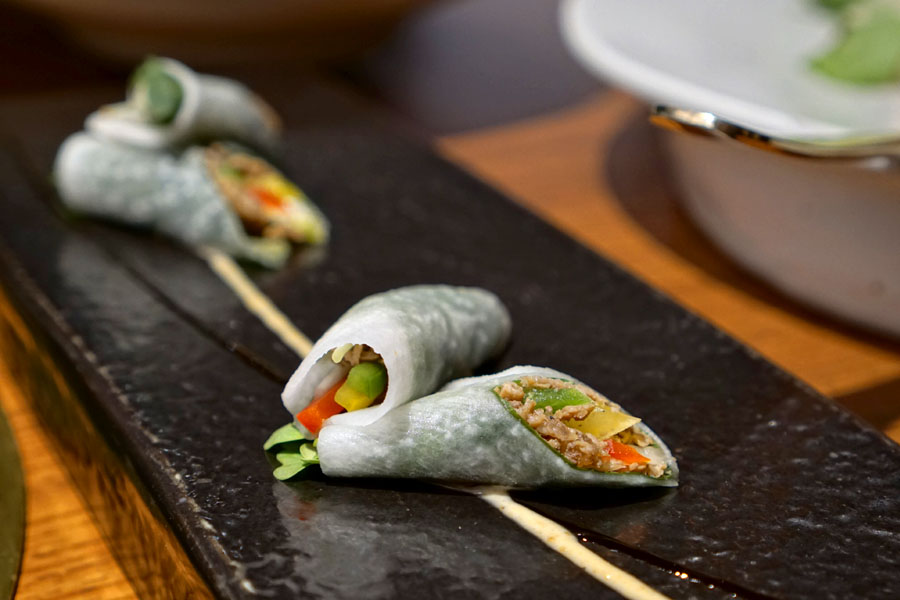
2: Broiled Sliced Beef with Vegetables / Roseupyeonchae
Here we see the restaurant's version of roseupyeonchae (a dish of veggies wrapped in beef). Think sweet and tangy and crunchy, but all moderated by the relative heft of the meat.
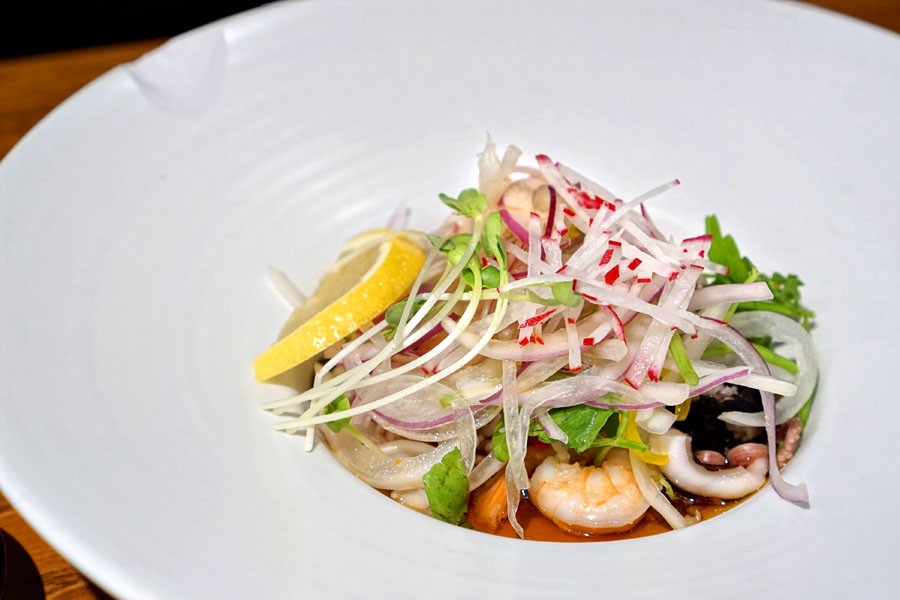
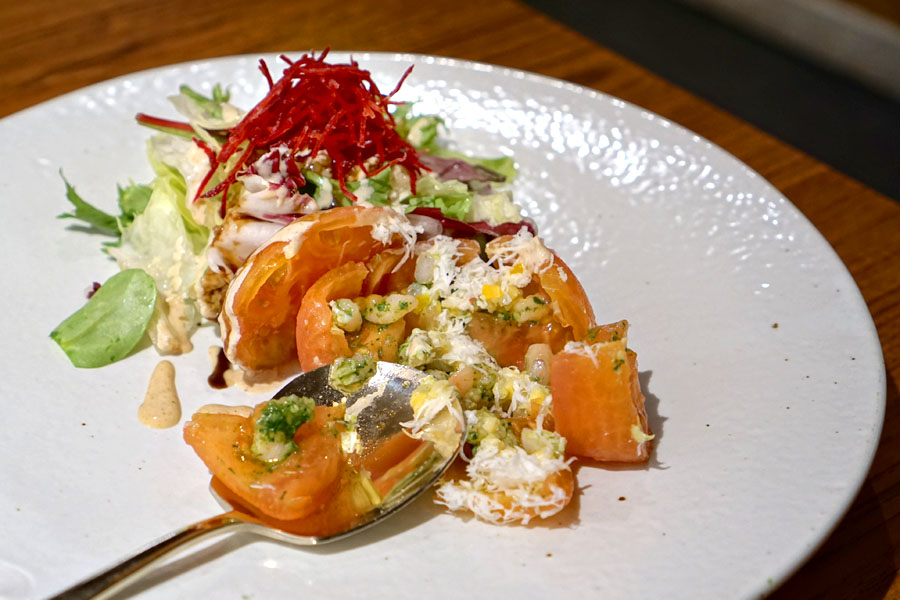
3: Tomato Seafood Salad / Tongtomato Haemul Saelleodeu
Next were two salads. The first featured seafood in an acidic-yet-savory broth, topped with a bevy of light, bright veggies. The second was more interesting thanks to its crab-stuffed tomato, which actually did a pretty good job marrying the sweetness of the crustacean with the tartness of the berry. Overall, these two plates functioned as a foil to some of the heavier flavors on the table.
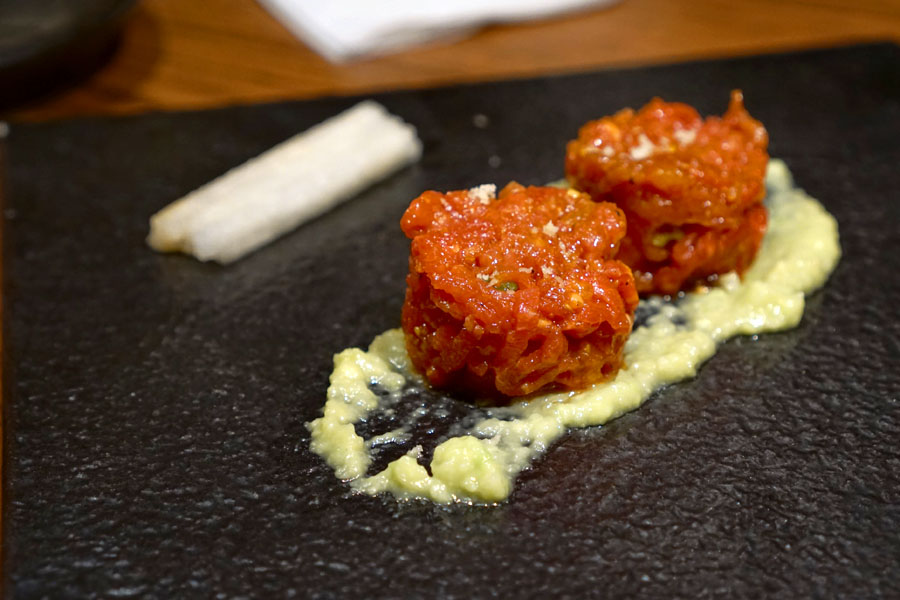
4: Korean Beef Tartare / Yukhoe
The yukhoe was on point. It had a great balance of savoriness and sweetness--especially with the juicy crunch of the bae--and I was a fan of the creeping gochujang spice on the back end.
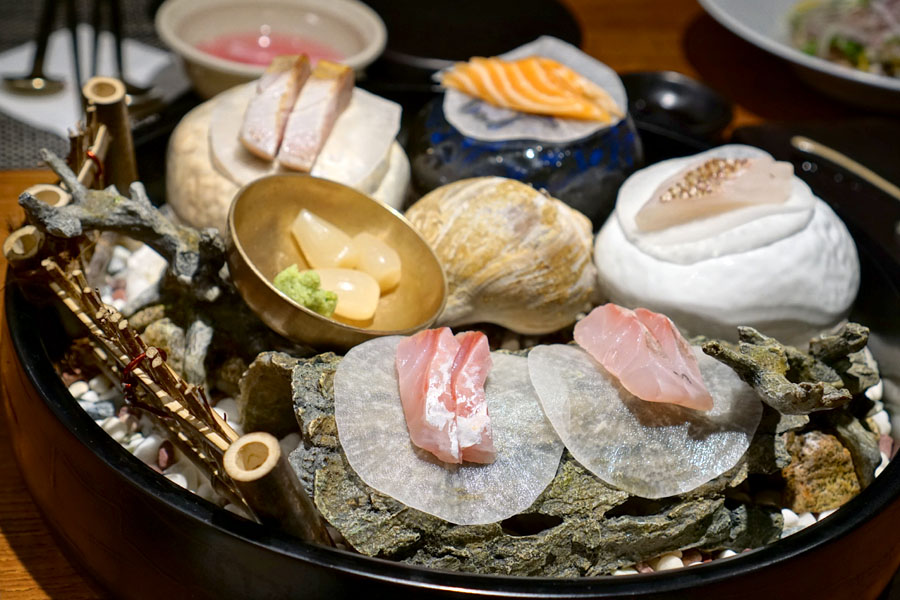
5: Premium Assorted Sashimi / Teugseon Modeumhoe
Our sashimi course was certainly fancily-presented, and was composed of five selections. Clockwise from top-left we had:
- Seared Yellowtail Belly - Heavy on the smoke and fat, this one really needed to be offset by the wasabi.
- Salmon - Fatty and luscious, and nice with a dab of soy.
- Red Snapper - I found this soft and creamy and mild; it really perked up with a bit of wasabi.
- Sea Bass - Very light and delicate. Curiously, the soy seemed to draw out a metallic flavor in the fish.
- Yellowtail - A pretty prototypical presentation, this was fatty as expected, with a persistent brine as well.
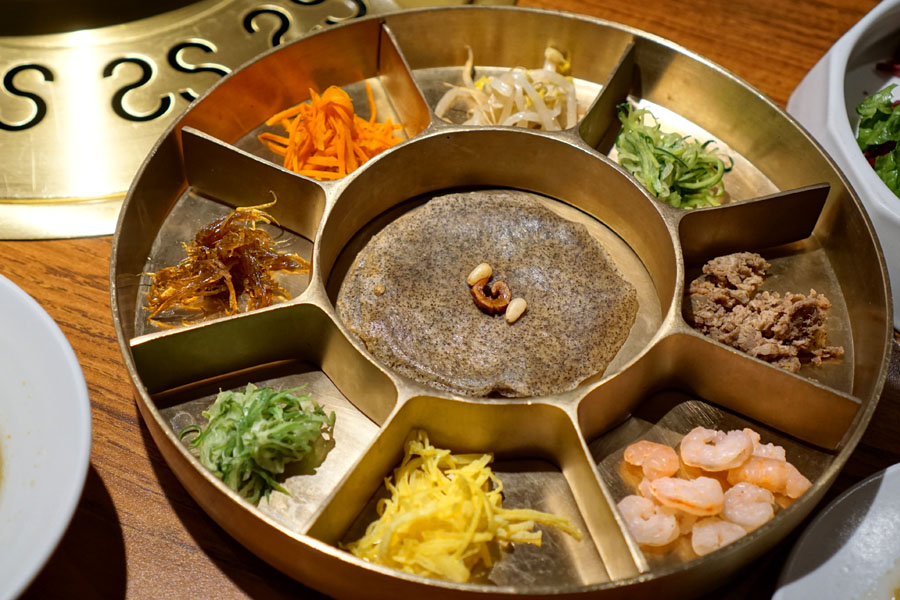
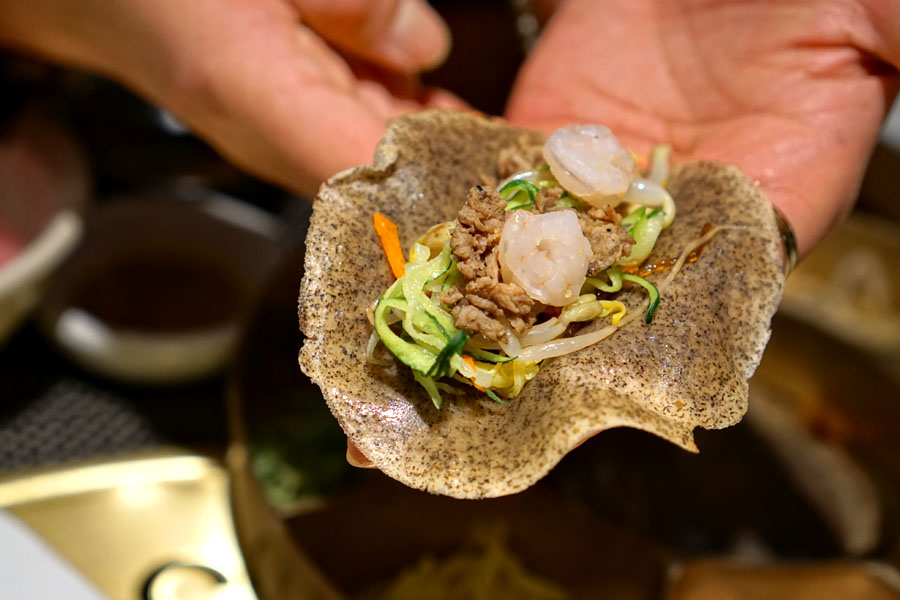
6: Gujeolpan
KyungBokKung's gujeolpan arrived on a surprisingly weighty metal gujeolpan. Clockwise from left, items included (I think): dried anchovies (myeolchi-bokkeum), carrots (danggeun namul), soybean sprouts (kongnamul), cucumbers (oi), beef (bulgogi), shrimp (saeu), egg strips (al-gomyeong), and scallion (pa). The key was to wrap everything up with the included pancake, which made for an array of textures and tastes that melded well.
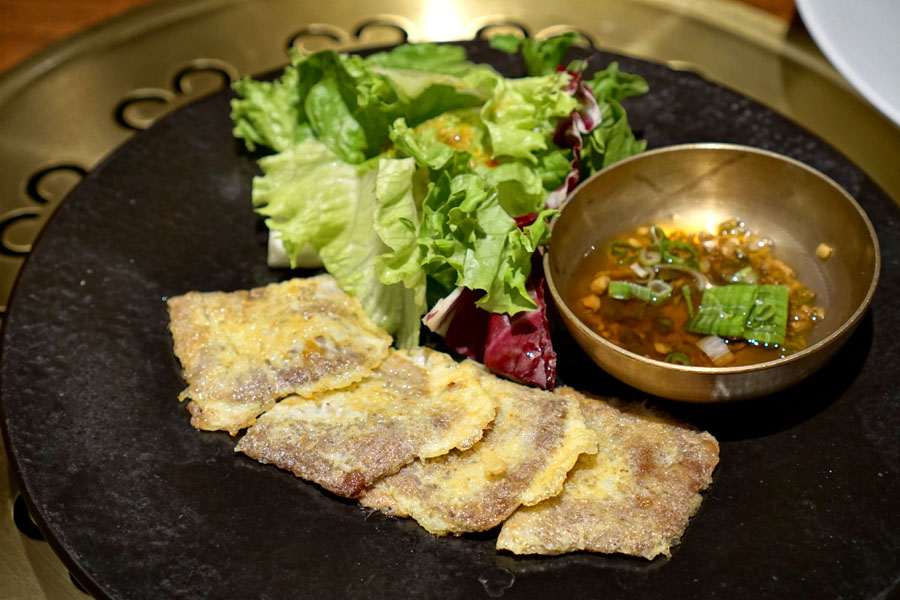
7: Yukjeon
The yukjeon were satisfying in a straightforward manner, and displayed a pronounced beefiness that paired well with that tangy dip on the side.
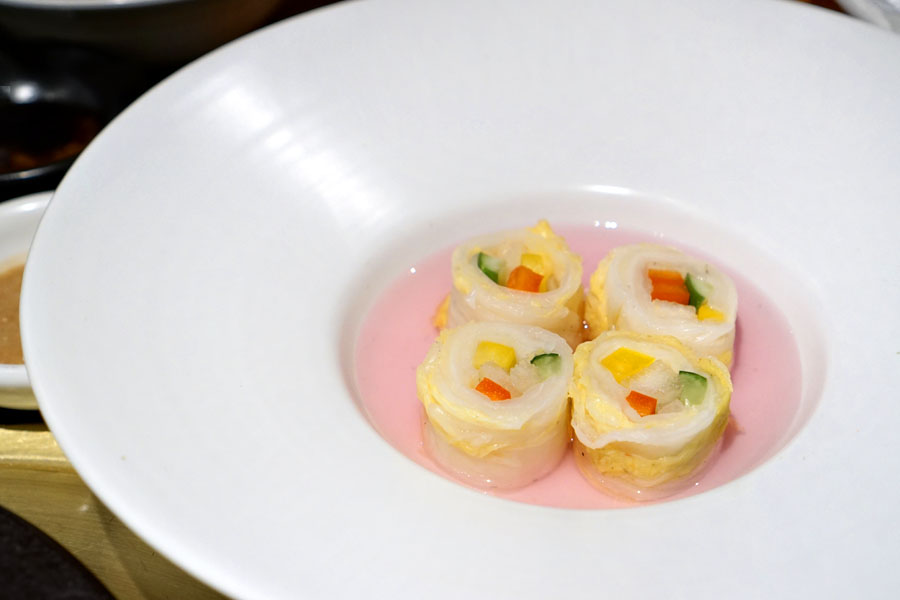
8: White Kimchi / Bae Baeggimchi
A rolled presentation of baek-kimchi ate crunchy and clean, with a not unwelcomed undercurrent of sweetness.
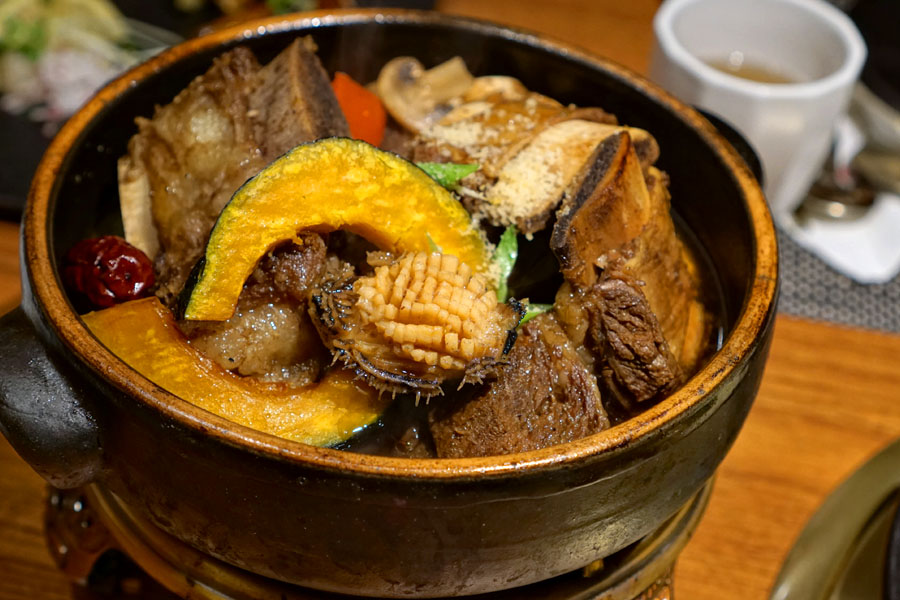
9: Braised Beef Short Ribs with Abalone / Jeonbog Galbijjim
Our main course was the galbi-jjim, which definitely hit the mark. The ribs arrived as tender as I wanted, but still substantial, while taste-wise I found 'em super beefy, with a great balance of savory and sweet flavors. The use of jeonbok, meanwhile, made for some textural contrast and an additional point of interest in the dish. I didn't need the danhobak in there, but didn't mind it either.
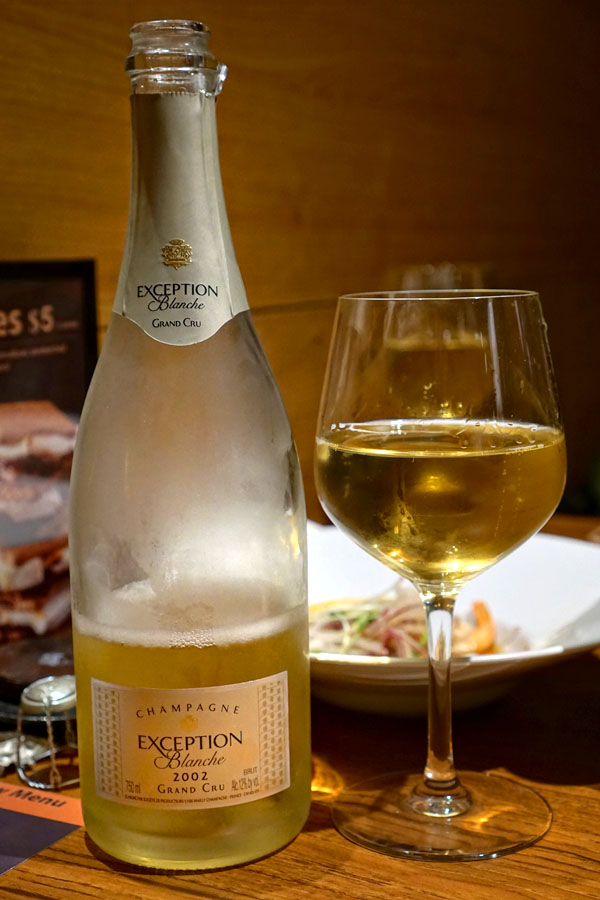
The evening's second bottle was the 2002 Mailly Champagne Grand Cru Exception Blanche, a blanc de blancs expression. The nose conveyed fresh bread alongside rich pome fruit and a slight astringency. Taste-wise, the wine showed off more of the same in a surprisingly soft, smooth package that could perhaps use a bit more vibrancy to it.
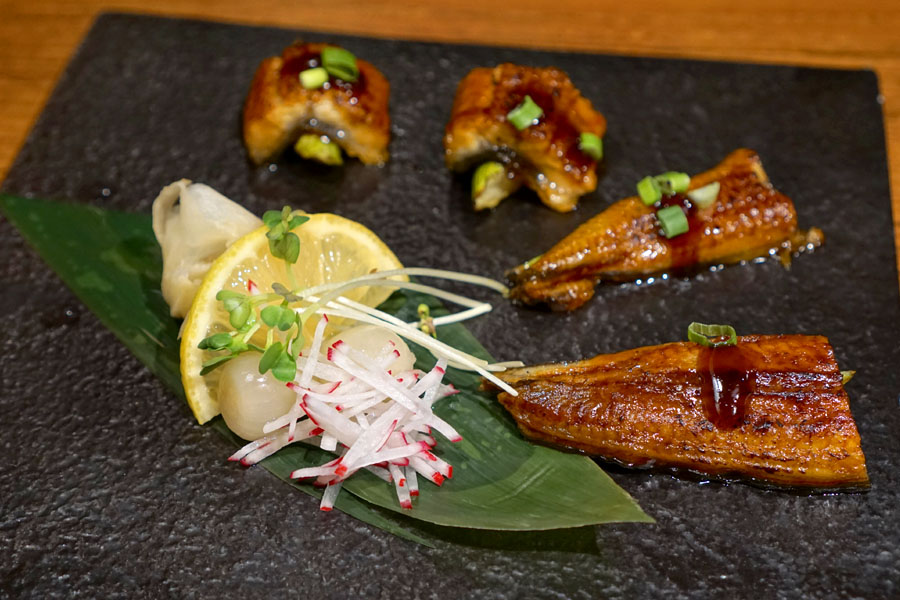
10: Grilled Fresh Water Eel / Minmuljangeo Gui
Grilled eel was dressed in a thick, sweet-savory sauce that made for a natural accompaniment for the fish. My favorite thing here were actually the stalks of asparagus underneath, which imparted an offsetting crunch and bitterness.
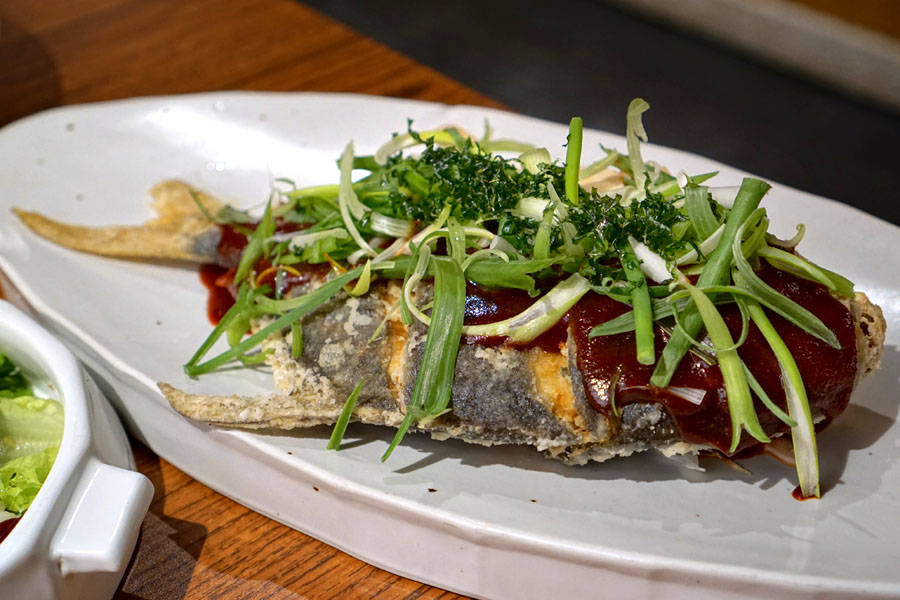
11: Grilled Scallops (Fried Fish) / Gwanjagui Yoli
The menu advertised "grilled scallops," but this obviously wasn't that (as the menu ostensibly changes seasonally). That being said, the fish worked it out, coming out properly crunchy, its mild taste supplemented by the sweet 'n' spicy nature of that sauce. I appreciated the contrast provided by all that greenery up top, too.
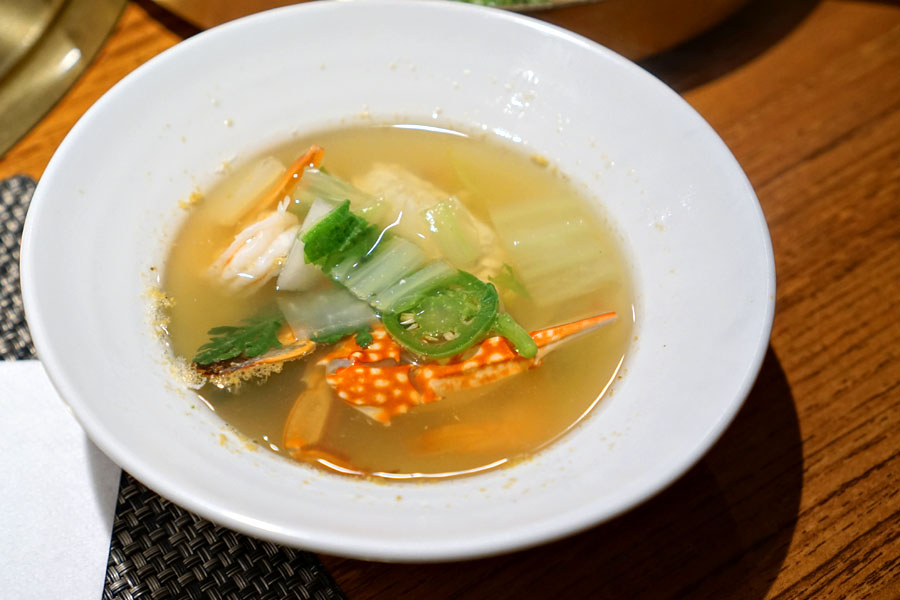
12: Boiled Clam Soup / Baeghab Nabetang
I'm not sure if the soup had the advertised clam, but I quite enjoyed it nevertheless. The crab imparted a cozy brine, and I was quite fond of the soup's growing heat as well.
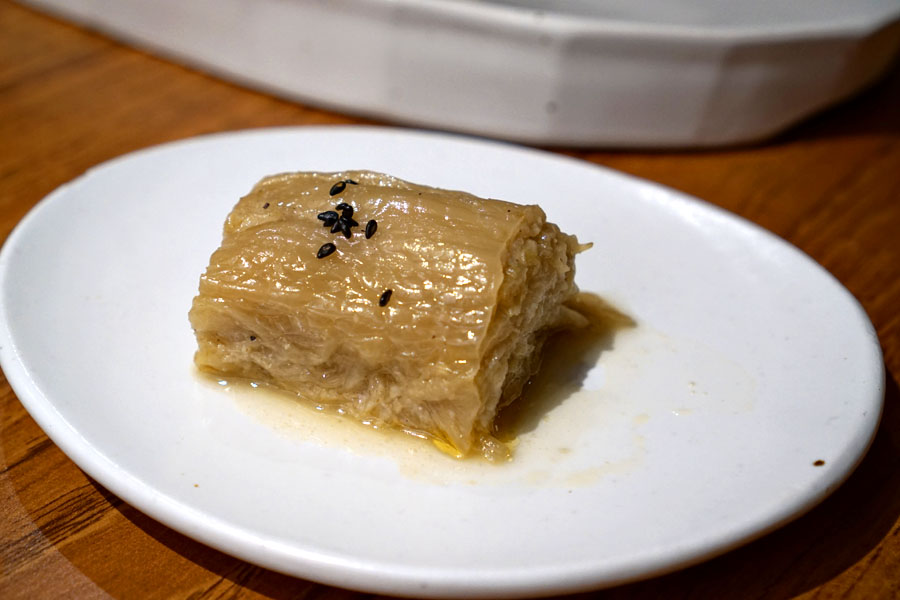
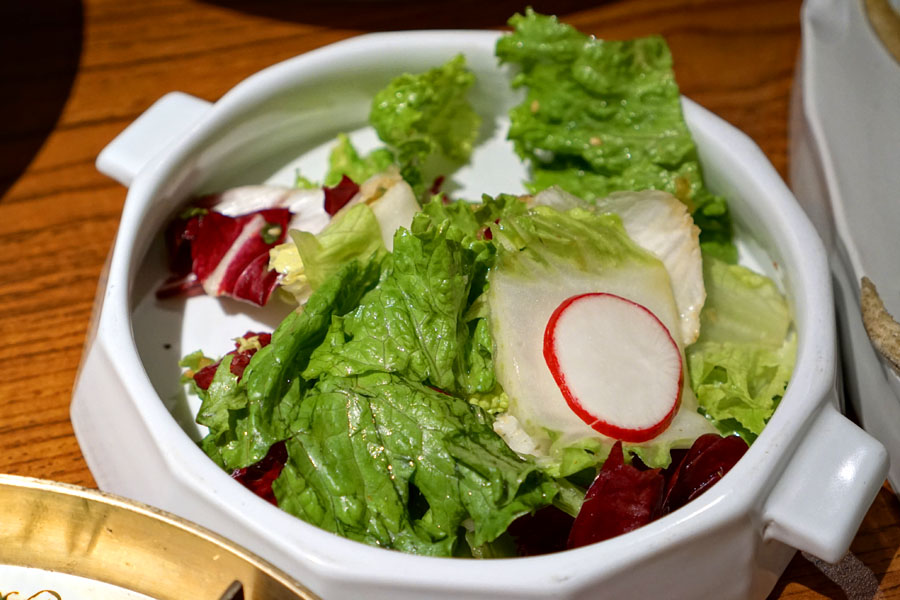
13: Side Dish Vegetables / Gyeotdeulim Yachae
Next we were served what our server described as "nurungji-fermented kimchi boiled in stock." I don't think I'd ever had anything quite like this before, as it tasted extra funky, with a nutty, almost "muddy" quality to it. Along with the kimchi came a romaine lettuce salad, which was simple enough, and had some pleasant spicy and sesame notes.
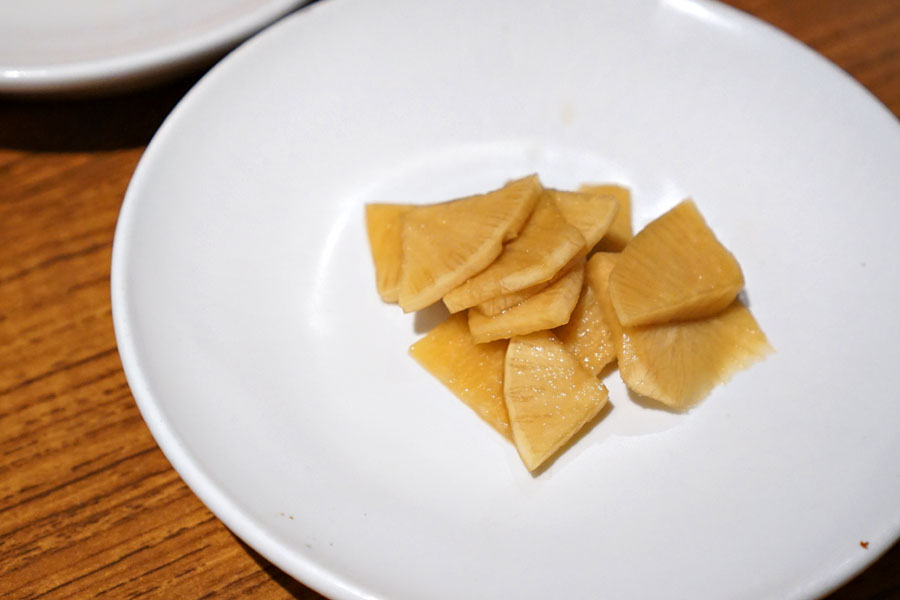
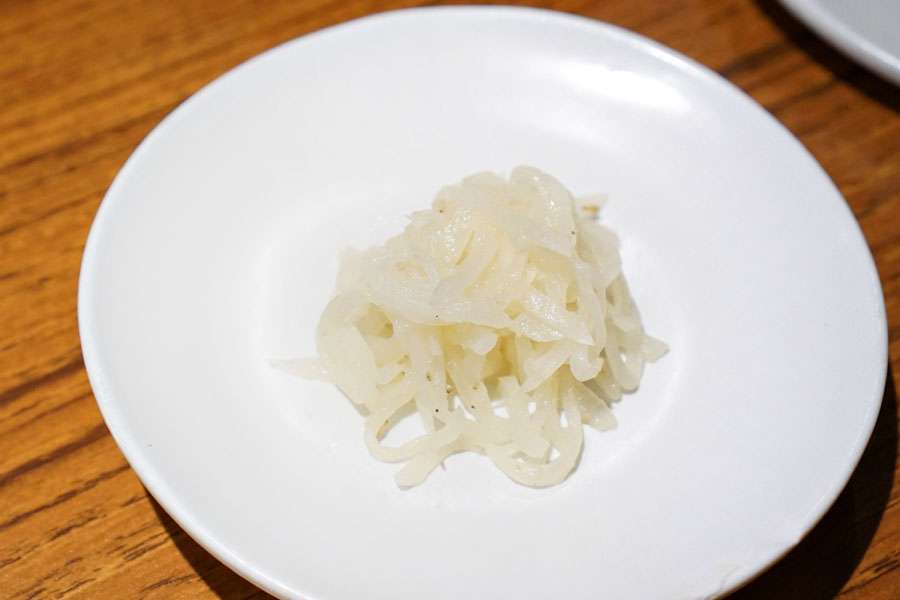
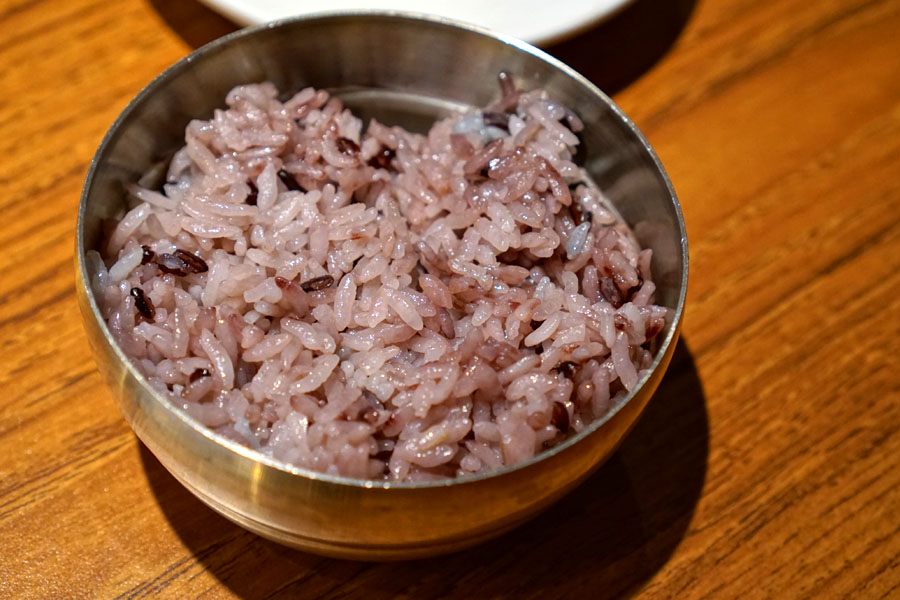
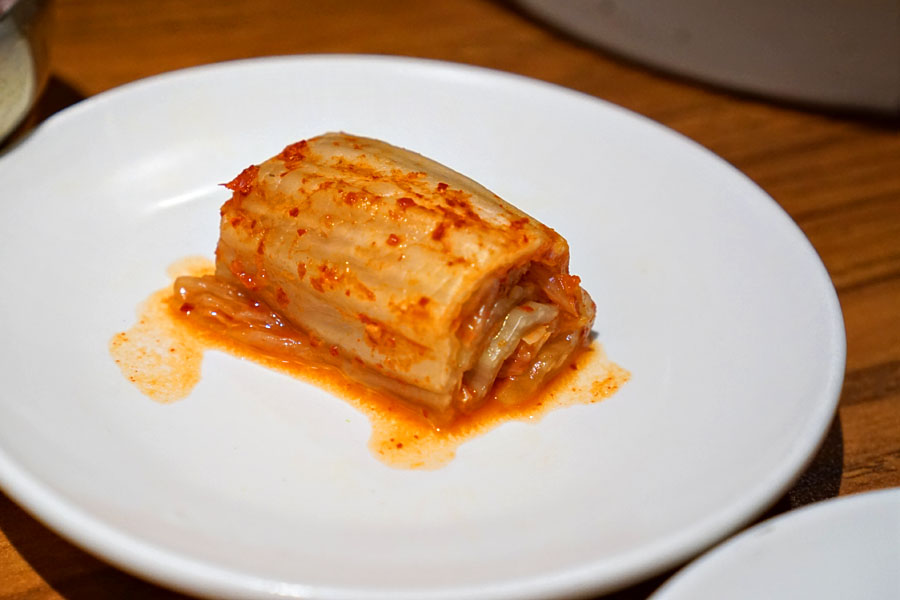
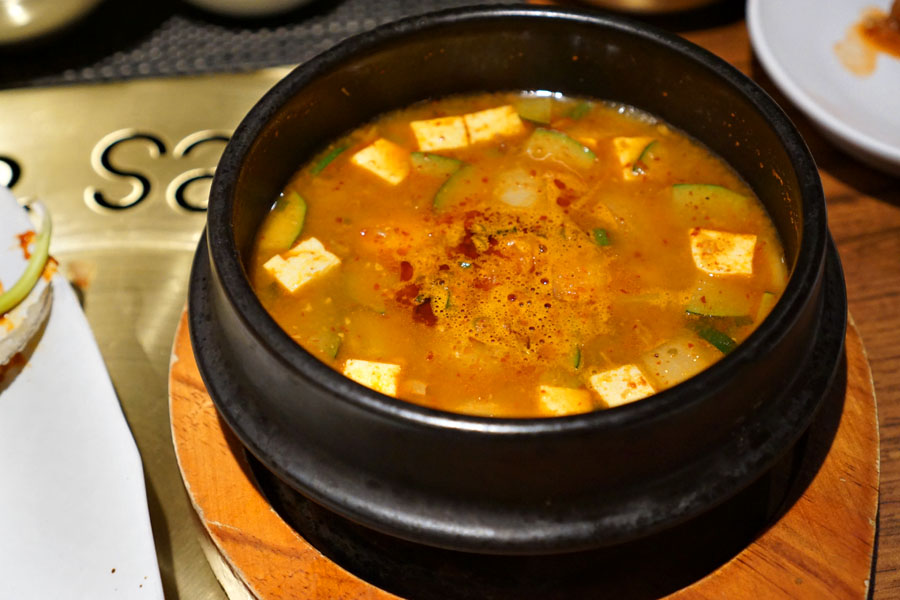
14: Ban-sang / Gaeinsigsa Bansang
Bansang basically refers to a main dish accompanied by rice and banchan, and tonight we were served doenjang-jjigae to close out our meal. The soybean paste stew hit the spot, and had seemingly more potency than usual.

15: Dessert / Husig
Dessert comprised a glass of sujeonggwa, a sweet-n-spicy cinnamon punch. Note the pine nuts tossed in there.
I was generally satisfied with the evening's dinner. It's pretty rare to encounter han jeongsik-style food at restaurants these days, so I'm glad that KyungBokKung is attempting it. We enjoyed a wide variety of dishes, some of which are not often seen, and the meal seemed like a good value too--we couldn't even finish all the food and ended up taking some home. Overall, given the level of the meal tonight, I'm actually curious about going back and trying the barbeque here.